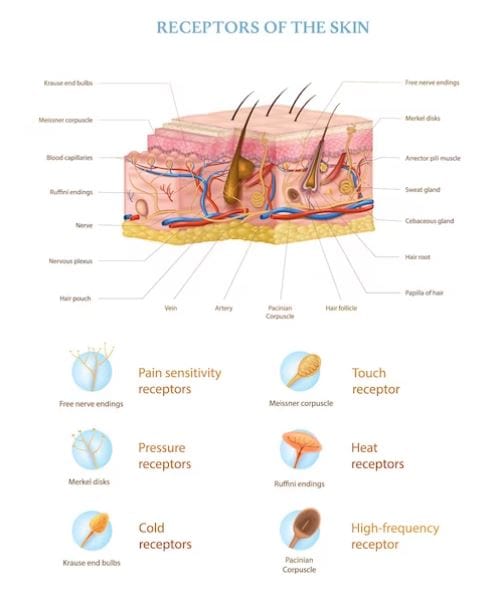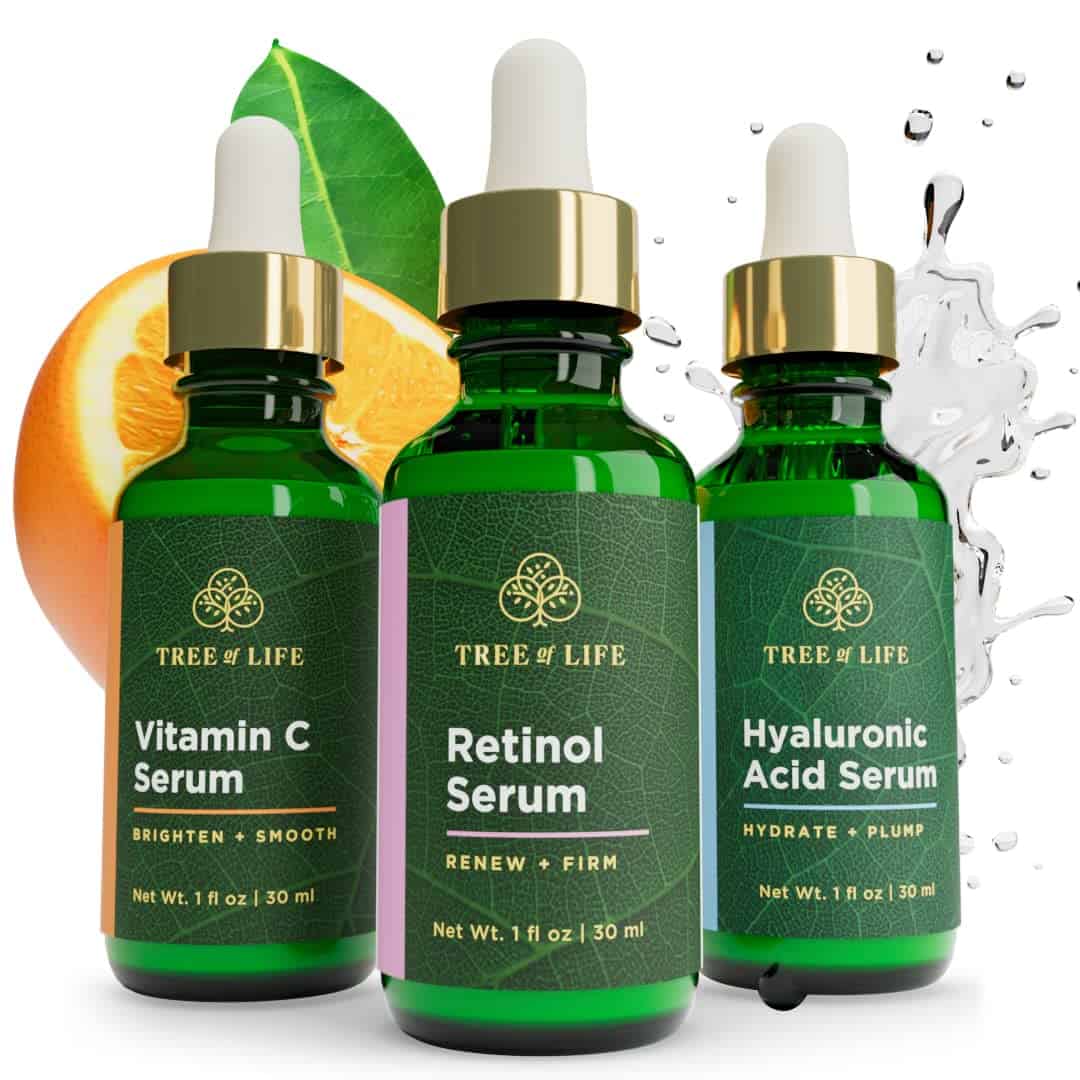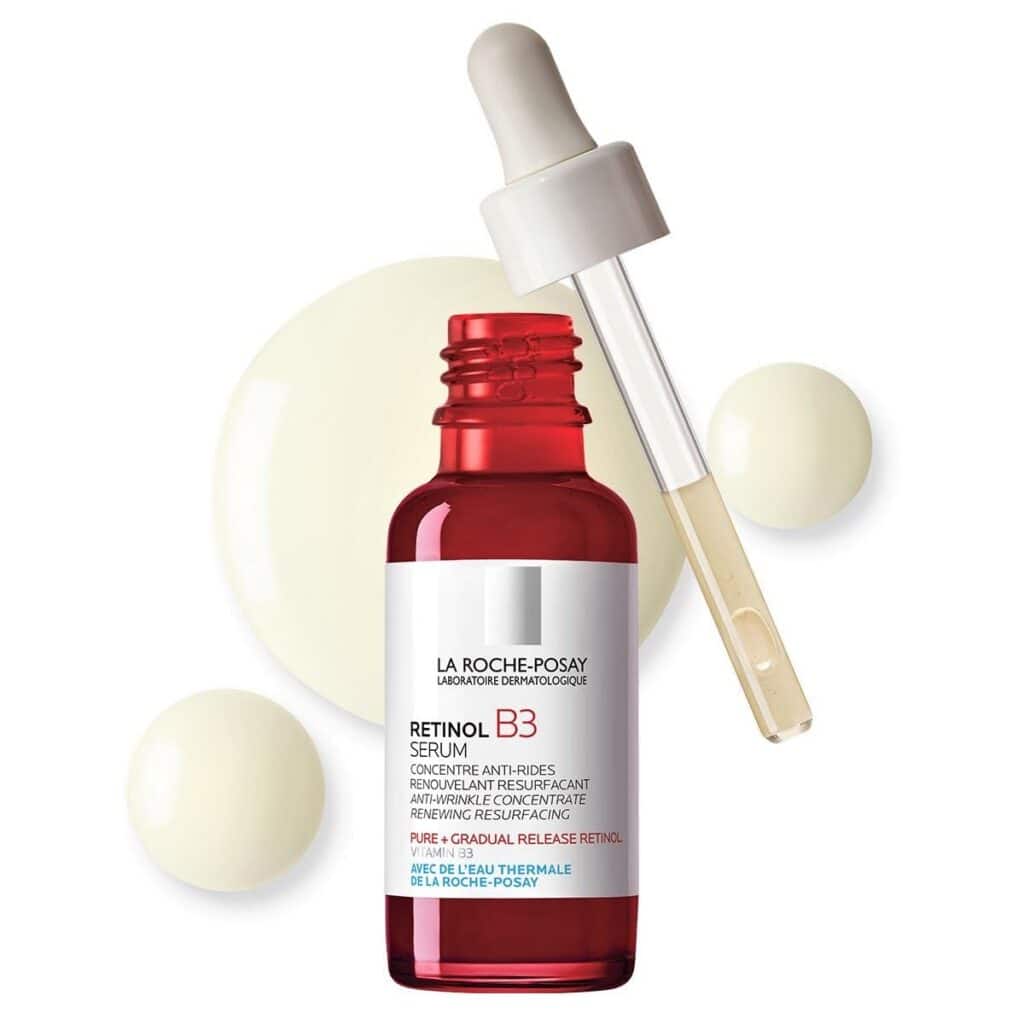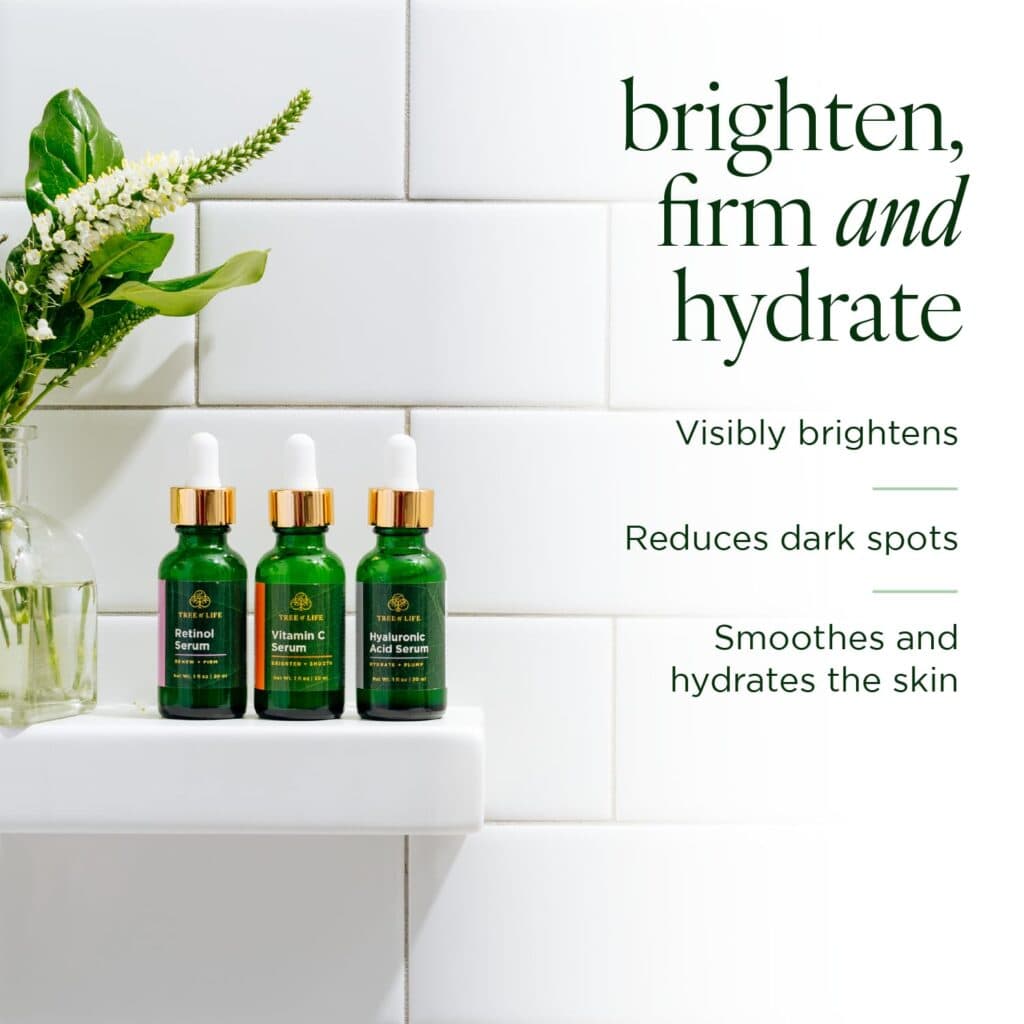
The Foundation of Healthy Skin
5 Insights| Retinol’s Impact on SkinCell Turnover – Skin cell turnover, or renewal, is a continuous process crucial for maintaining healthy skin. The epidermis, the outermost layer of the skin, is composed of several layers of cells.
New cells are generated at the bottom layer and gradually move upwards, replacing older cells that naturally shed.
This turnover cycle typically takes about 28 days in younger individuals but can slow down with age, resulting in a buildup of dead skin cells, contributing to a lackluster complexion.
Retinol: A Game-Changer in Skincare
Retinol, a derivative of Vitamin A, stands out among skincare ingredients for its remarkable impact on skin health. It’s revered for its ability to accelerate cellular turnover, essentially ‘speeding up’ the shedding of old cells and encouraging the emergence of fresh, younger cells.
This not only contributes to a smoother skin texture but also helps address a range of concerns from fine lines and wrinkles to uneven tone and texture.
The Mechanism Behind Retinol’s Effect on Skin Cell Turnover
- Receptor Interaction: Triggering Change at a Cellular Level
Retinol engages with specialized receptors in skin cells, initiating a sequence of events upon absorption. This binding process activates cellular mechanisms that accelerate the turnover of skin cells, encouraging a quicker shedding of old cells and promoting the emergence of fresher skin.
- Collagen and Elastin Boost: Reinforcing Skin Structure
One of retinol’s key roles involves stimulating the production of collagen and elastin, vital proteins for skin strength and elasticity. This heightened production aids in reducing fine lines and wrinkles while contributing to firmer, more resilient skin.
- Regulation of Pores and Oil: Balancing Skin Health
Beyond surface-level effects, retinol regulates sebum production and unclogs pores. By moderating oil levels and aiding in exfoliation, it helps manage acne, refines skin texture, and prevents pore blockages.
- Comprehensive Skin Benefits: Addressing Multiple Concerns
Retinol’s versatility extends to addressing diverse skin issues, from aging signs to acne, thanks to its multifaceted actions. Its ability to enhance cell turnover, collagen synthesis, and regulate oil production makes it a valuable asset in skincare.
- Balanced Usage for Optimal Results
Using retinol cautiously is crucial to minimize potential irritation. Gradually introducing it into a skincare routine, with lower concentrations and consistent use, allows the skin to adapt and reap the benefits effectively.
- Patience and Customization: Tailoring Retinol Use
Patience is key, as noticeable improvements typically require weeks or months of consistent usage. Customizing its application based on individual skin types and concerns, possibly with expert guidance, optimizes the benefits of retinol while minimizing any adverse effects.
Incorporating Retinol Into Your Skincare Routine
- Starting Low for Skin Adaptation
Introducing retinol demands a careful strategy to minimize potential irritation and maximize its benefits. Begin with a lower concentration, usually ranging between 0.25% to 0.5%. This allows the skin to acclimate gradually to the product, reducing the likelihood of adverse reactions such as redness or peeling.
- Patch Testing: Understanding Individual Sensitivity
Before fully incorporating retinol into your routine, perform a patch test on a small, inconspicuous area of your skin. Apply a small amount of the product and monitor the skin’s reaction over 24 hours.
This test helps determine individual sensitivity, enabling you to gauge how your skin might respond to retinol.
- Optimal Application Timing: Enhancing Effectiveness
Nighttime application of retinol is a widely recommended practice. This timing aligns with the skin’s natural repair and regeneration process during sleep.
Apply retinol after cleansing your face thoroughly, ensuring the skin is clean and ready to absorb the product. Following it with a moisturizer helps mitigate any potential dryness or irritation.
- Usage Frequency and Patience: Gradual Increase for Adaptation
Initially, limit the frequency of retinol application to once or twice a week to allow the skin to adjust. Over time, gradually increase usage based on your skin’s response.
Patience is crucial; visible improvements typically take several weeks to months of consistent use. Avoid overuse or applying it too frequently, as it can overwhelm the skin and lead to sensitivity.
- Sun Protection: A Non-Negotiable Companion
Pairing retinol usage with adequate sun protection is imperative. Retinol can increase skin sensitivity to UV rays, making it more susceptible to sun damage.
Hence, incorporate a broad-spectrum sunscreen with at least SPF 30 into your daytime routine to shield your skin from potential harm.
- Moisturization and Hydration: Supporting Skin Barrier
To counterbalance potential dryness or irritation caused by retinol, prioritize moisturization. Opt for gentle, hydrating moisturizers that help replenish the skin’s moisture barrier.
This step is essential to maintain skin health and mitigate any adverse effects associated with retinol use.
- Consistency and Adaptation: Adjusting for Individual Tolerance
Every individual’s skin responds uniquely to retinol. While some may adapt quickly, others may require more time. It’s crucial to listen to your skin’s cues and make adjustments accordingly.
Consulting with a dermatologist or skincare professional can provide tailored guidance based on your skin’s specific needs.
5 Insights| Retinol’s Impact on SkinCell Turnover: Potential Challenges and Maximizing Benefits
- Understanding the “Retinization” Phase
When introducing retinol into your skincare regimen, it’s common to experience a phase termed “retinization.”
This adjustment period involves various skin reactions such as redness, dryness, flakiness, or a mild stinging sensation. These effects occur as the skin adapts to the active ingredient.
- Strategies for Mitigating Retinization Effects
To navigate the retinization phase more comfortably, several strategies can be employed. Gradually increasing the frequency of retinol usage allows the skin to acclimate at its own pace, reducing the likelihood of intense irritation.
Ensuring the skin remains well-hydrated and fortified with moisturizers helps alleviate dryness and flakiness, fostering a healthier skin barrier.
- Sunscreen’s Amplified Importance
Sun protection becomes even more critical when using retinol due to increased skin sensitivity. Retinol can make the skin more vulnerable to the sun’s harmful UV rays, potentially leading to heightened sun damage.
Therefore, incorporating a broad-spectrum sunscreen with a high SPF rating is non-negotiable. Apply it diligently during the day to shield your skin from potential UV-induced damage and minimize adverse effects.
- Adaptation and Customization for Skin Tolerance
Individual skin tolerance to retinol varies, and patience is key when encountering these initial challenges. While some individuals might experience retinization for a short period, others may take longer to adapt.
Adapting the retinol routine to suit your skin’s needs, such as reducing frequency or using lower concentrations initially, can ease the transition and minimize discomfort.
- Consistency and Timeframe for Results
Consistency in retinol use is crucial for reaping its benefits, but results don’t manifest overnight. It typically takes several weeks to months of persistent use to notice substantial improvements in skin texture, tone, and the reduction of fine lines and wrinkles.
Staying committed to the routine while being patient with the process is essential for achieving desired outcomes.
- Consulting Professionals for Guidance
In cases where challenges persist or if there are concerns about the adaptation phase, seeking advice from dermatologists or skincare experts can provide valuable insights.
They can offer tailored recommendations, assess individual skin conditions, and suggest modifications to the retinol regimen for a more comfortable and effective experience.
The Journey to Radiant Skin: Patience and Persistence
- Understanding the Timeframe for Results
Patience is a virtue when it comes to incorporating retinol into your skincare routine. It’s important to manage expectations as visible improvements don’t occur overnight.
Instead, it takes time for retinol to work its magic. Typically, noticeable changes in skin texture, tone, and the reduction of fine lines and wrinkles emerge over several weeks to months.
- Gradual Introduction and Tolerance-Based Adjustment
Initiating retinol use at a conservative frequency, such as a few times a week, allows the skin to adapt gradually. Starting slow and gradually increasing the frequency based on your skin’s tolerance is key.
This measured approach minimizes the risk of overwhelming the skin and experiencing excessive irritation.
- Consistency: Key to Unlocking Retinol’s Potential
Consistent use of retinol is pivotal in realizing its full potential. Skipping applications or irregular usage may hinder the effectiveness of the product.
Adhering to a consistent routine ensures that the benefits of retinol are maximized and that the skin undergoes a steady process of renewal and rejuvenation.
- Integration into a Comprehensive Skincare Regimen
While retinol plays a significant role, a holistic skincare routine contributes to its efficacy. Combining retinol with other beneficial skincare practices, such as adequate hydration, sun protection, and gentle cleansing, creates a synergistic effect.
This comprehensive approach enhances the overall health and appearance of the skin.
- Managing Expectations and Adapting to Individual Needs
Individual responses to retinol vary, and therefore, it’s important to manage expectations. While some may witness visible improvements sooner, others might take longer to notice significant changes.
Adjusting the retinol routine according to individual skin needs, such as tweaking concentrations or usage frequency, is key for a comfortable and effective experience.
- Consultation for Tailored Guidance
For those navigating challenges or seeking a more personalized approach, consulting skincare professionals or dermatologists can provide invaluable guidance.
They can offer tailored advice, assess individual skin conditions, and suggest adjustments to the retinol regimen to optimize results while minimizing discomfort.
Final words about 5 Insights| Retinol’s Impact on SkinCell Turnover
Retinol’s role in promoting skin cell turnover is backed by scientific research and decades of proven efficacy.
Its ability to revitalize the skin by accelerating cellular renewal, stimulating collagen production, and addressing various skin concerns makes it a staple in many skincare regimens.
However, understanding its potential side effects and using it judiciously, with patience and consistency, is key to unlocking its transformative potential.
Read related: The Power of Skin Cell Turnover’s Role in Skin and Gut Health










